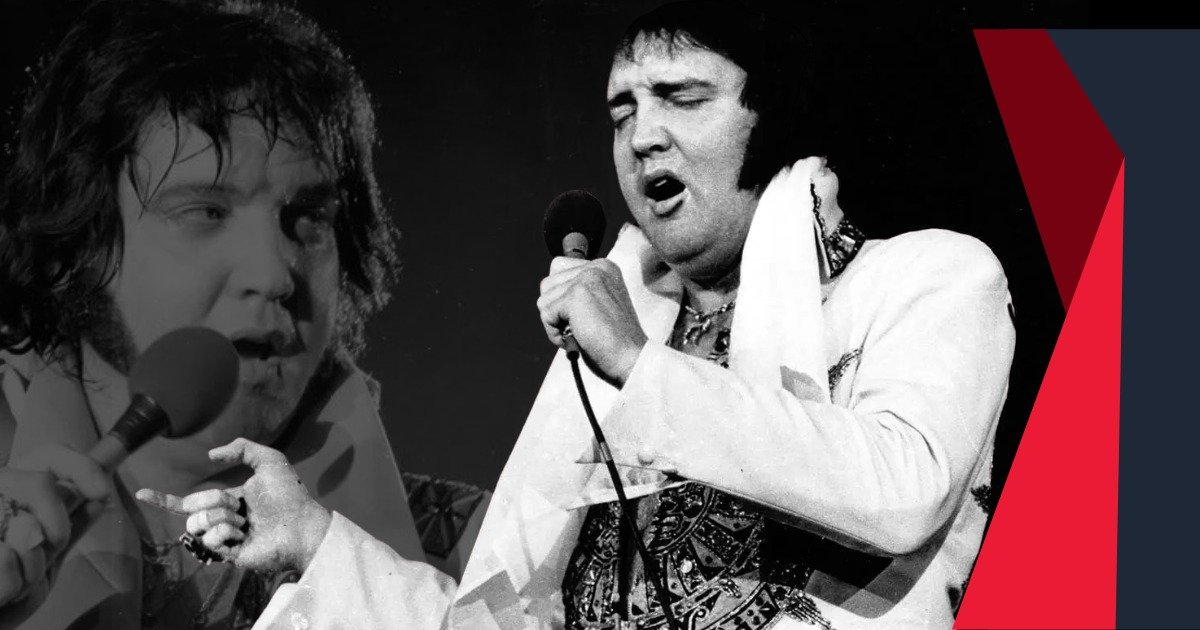Elvis Presley, the King of Rock and Roll, remains one of the most iconic figures in music history. His voice, charisma, and groundbreaking performances revolutionized the entertainment industry and captured the hearts of millions. But as the years went by, fans witnessed a drastic transformation in his appearance. The term “Fat Elvis” became widely used to describe the later stages of Elvis’s life, marked by his weight gain, declining health, and Las Vegas performances. This era, though controversial, still holds a deep fascination for fans and historians alike. But what really happened during this time? Let’s explore the story behind Fat Elvis and how it shaped his legacy.
Who Was “Fat Elvis”?
The term “Fat Elvis” refers to the final years of Elvis Presley’s life, typically from the early 1970s until his death in 1977. By this time, Elvis had already enjoyed nearly two decades of fame, with a career that had started in the 1950s. However, as he entered the 70s, his once-lean physique began to change. Fans and the media alike began to notice his weight gain, which eventually led to the label “Fat Elvis.” But this era was not just about his physical appearance. It was a complex period of Elvis’s life, filled with both challenges and triumphs, including personal struggles, health problems, and the pressures of maintaining his stardom.
While the “Fat Elvis” label is often used to describe his appearance, it’s important to remember that Elvis was still performing, recording, and maintaining his status as a cultural icon. His career in the 70s was defined by a series of Las Vegas residencies, elaborate jumpsuits, and some of the most memorable performances of his career. Though the “Fat Elvis” period is often portrayed negatively, it also marked some of his most legendary moments on stage, showcasing his enduring talent and connection with audiences.
The Transformation: How Elvis Became the “Fat Elvis” We Remember
Elvis’s transformation into the “Fat Elvis” persona did not happen overnight. By the late 60s, Elvis was already struggling with personal and professional pressures. His marriage to Priscilla Presley was falling apart, and his acting career had stalled. Though his 1968 comeback special reignited his music career, the toll of fame was beginning to show. In the early 70s, Elvis’s health started to decline, which contributed to his weight gain.
Several factors led to Elvis’s physical transformation. His demanding performance schedule in Las Vegas, combined with a poor diet and a dependency on prescription medications, took a toll on his body. Elvis was known for indulging in unhealthy foods, including fried peanut butter and banana sandwiches, which became infamous as his go-to comfort food. As his weight increased, so did public scrutiny, but Elvis continued to perform, often wearing elaborate jumpsuits that only seemed to draw more attention to his changing physique.
By the mid-70s, Elvis’s weight gain had become one of the defining features of his later career. However, despite the challenges he faced with his health and appearance, Elvis remained dedicated to his fans and continued to deliver electrifying performances, even if they were not at the same level as his earlier years.
Elvis Presley’s Health Issues: The Downward Spiral
Elvis’s weight gain was not simply the result of overeating or lack of exercise. His declining health was a significant factor in his transformation during the “Fat Elvis” years. By the early 70s, Elvis was battling multiple health issues, including high blood pressure, liver damage, and a weakened immune system. Many of these problems were exacerbated by his heavy use of prescription medications, which he relied on to manage chronic pain and insomnia.
Elvis’s reliance on medications also had a psychological impact. He struggled with depression, anxiety, and feelings of isolation, which further contributed to his deteriorating health. As his physical condition worsened, so did his ability to perform at the level he once had. His performances became more sporadic, and it became clear to many fans that Elvis was no longer the energetic, vibrant performer they had come to know.
In addition to his physical health issues, Elvis’s emotional and mental state was deteriorating. The pressures of fame, coupled with his failing marriage and personal struggles, led to a downward spiral that eventually resulted in his untimely death in 1977. Despite these challenges, however, Elvis continued to work, releasing albums and performing in front of sold-out crowds, proving his enduring popularity.
The Fat Elvis Era: Iconic Performances in Las Vegas
One of the defining features of the “Fat Elvis” era was his residency in Las Vegas. Elvis’s Las Vegas performances in the 70s are some of the most iconic moments of his career, despite the controversies surrounding his health and appearance. The Las Vegas years were a period of both triumph and tragedy for Elvis, as he solidified his status as a performer but also faced mounting health issues.
Elvis first began performing in Las Vegas in 1969, and his residency at the International Hotel (later the Las Vegas Hilton) became a significant part of his legacy. His shows were extravagant, featuring elaborate costumes, massive orchestras, and packed audiences. Despite his weight gain, Elvis still had the ability to captivate an audience, and his performances were filled with the same charisma and energy that had made him famous in the first place.
However, the grueling schedule of multiple shows per night, coupled with his deteriorating health, began to take a toll. As the years went on, Elvis’s performances became less consistent. Some nights, he would deliver a powerful performance, while on other nights, he seemed fatigued and disconnected. Nevertheless, his fans remained devoted, and his Las Vegas shows continued to draw massive crowds.
The Las Vegas era also saw the rise of the iconic “Fat Elvis jumpsuit,” a signature part of his stage wardrobe. These jumpsuits, often adorned with rhinestones and elaborate embroidery, became one of the most recognizable symbols of his later career.
The Legend of Fat Elvis Lives On: Impersonators and Pop Culture
Even after his death, the “Fat Elvis” persona has continued to live on in popular culture. Today, Elvis impersonators across the world don the jumpsuits and perform his songs, keeping the legend of Fat Elvis alive. In Las Vegas, where Elvis once reigned supreme, “Fat Elvis” impersonators are still a popular attraction, with performances that pay tribute to both his music and his larger-than-life personality.
In addition to impersonators, the “Fat Elvis” image has been referenced in countless movies, TV shows, and even art. While some depictions of “Fat Elvis” may lean toward parody, there is also a sense of reverence for the man who, despite his personal struggles, left an indelible mark on the world of entertainment.
Elvis’s final years may have been filled with challenges, but they also solidified his place as a legend. The “Fat Elvis” era, with all its complexities, remains a crucial part of understanding the full story of Elvis Presley. Though his physical appearance changed, his impact on music and culture remained as powerful as ever.
Conclusion
The story of “Fat Elvis” is a reminder that even the most celebrated figures are not immune to the struggles of life. Elvis Presley’s later years were marked by physical decline and personal challenges, but his talent, charisma, and influence never wavered. The “Fat Elvis” persona, while often overshadowed by his earlier successes, is a testament to his enduring legacy and resilience. Despite the weight gain and health issues, Elvis remained a beloved figure, with millions of devoted fans worldwide. His influence continues to be felt today, from his timeless music to the countless impersonators who keep his memory alive. Whether through his iconic Las Vegas performances or his impact on pop culture, the King of Rock and Roll still reigns supreme, inspiring generations of artists, musicians, and entertainers even decades after his passing.
FAQs
- What caused Elvis Presley to gain weight in his later years?
Elvis’s weight gain was due to a combination of factors, including poor diet, a demanding performance schedule, and reliance on prescription medications to manage his health issues. - What is the “Fat Elvis” era?
The “Fat Elvis” era refers to the final years of Elvis Presley’s life, primarily the 1970s, during which he experienced significant weight gain and declining health but continued to perform, particularly in Las Vegas. - Did Elvis’s weight affect his performances? s?
Elvis’s jumpsuits became iconic during his Las Vegas performances in the 70s. They were often elaborate, featuring rhinestones and embroidery, and are closely associated with the “Fat Elvis” persona. - Why is “Fat Elvis” still popular in pop culture?
“Fat Elvis” continues to be popular in pop culture due to his lasting influence on music and entertainment. His final years, despite their challenges, solidified his status as a legend, and his image remains a symbol of his enduring impact.

Alex Taylor is a seasoned writer and editor with over 5 years in digital media, specializing in practical home maintenance guides and homeowner tips. From heating system upkeep to seasonal repair checklists, Alex blends clear, relatable advice with real-world experience to help readers protect their homes and budgets. He personally reviews and fact-checks every article in his areas of expertise to ensure accuracy, clarity, and real-world usefulness. His work also spans tech, culture, fashion, sports, and lifestyle—always with a focus on clarity, relevance, and reader value.
Discover more from Try Hard Guides
Subscribe to get the latest posts sent to your email.

